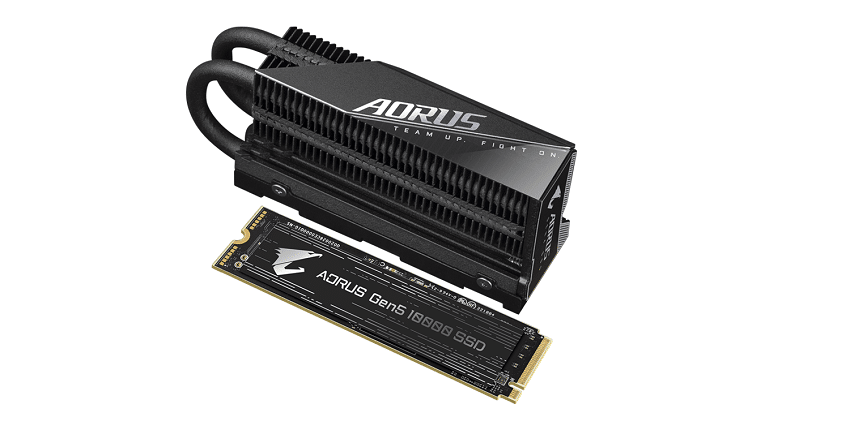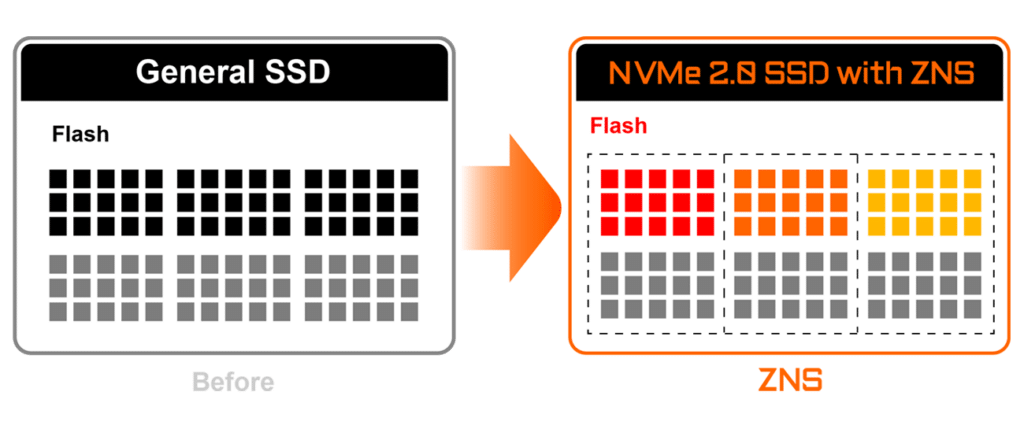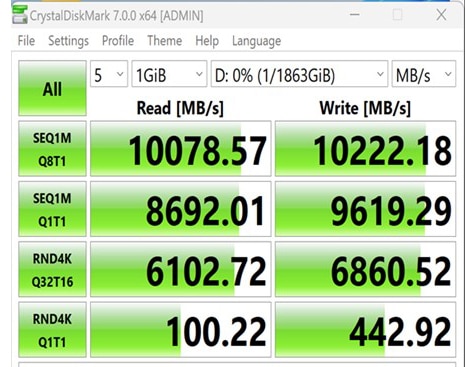The GIGABYTE AORUS 10000 SSD is the first publicly announced client PCIe Gen5 drive based on the Phison E26 controller. Designed as an ultra-high-performance storage solution for demanding users like content creators and gamers, the AORUS 10000 has the potential to reach read speeds of 10GB/s, which is an improvement of roughly 40% compared to Gen4 drives.
The GIGABYTE AORUS 10000 SSD is the first publicly announced client PCIe Gen5 drive based on the Phison E26 controller. Designed as an ultra-high-performance storage solution for demanding users like content creators and gamers, the AORUS 10000 has the potential to reach read speeds of 10GB/s, which is an improvement of roughly 40% compared to Gen4 drives.
It also features a 200-layer stack structure of 3D-TLC NAND Flash and built-in LPDDR4 cache design, the former of which allows for capacity models as high as 10TB.

GIGABYTE AORUS 10000
Let’s get into some of the details of the AORUS Gen5 10000 SSD starting with NVMe 2.0 support. This interface is highlighted by its use of Zoned Namespaces (ZNS), a technology that allows the SSD and the host to work together in placing data within the drive without relying on overprovisioning.
The ZNS support is a little weird though, client SSDs aren’t typically deployed like this and there’s highly limited software support, so it’s a little strange to call this out as a major new feature while providing few details other than the image below. That said, we’re curious to see how these Phison E26 SSDs embrace ZNS and other new capabilities found within the NVMe 2.0 spec.
The new drive comes bundled with the usual SSD monitoring software via the GIGABYTE GCC. This tool provides real-time information about the SSD’s performance, thermal stability, and capability, allowing users to optimize the SSD’s performance.
As for performance, the AORUS Gen5 10000 is specced to deliver sequential read speeds of up to 9,500MB/s and sequential write speeds of up to 8,500 MB/s. That said, GIGABYTE posted some actual benchmarking in their press release via CrystalDiskMark, where it indicated 10.1GB/s read and 10.2GB/s write in sequential performance. This does not saturate the Gen5 interface yet however, GIGABYTE has indicated more tuning will yield better results over time. We saw the same in the Gen4 transition, so this “release and iterate” model is common.
Its thermal management capabilities are also interesting. While heatsink attachments are commonly included for higher-end SSDs to help dissipate heat (to prevent performance throttling), GIGABYTE has decided to separate the packaging of the SSD and heatsink. Dubbed the “M.2 Thermal Guard XTREME”, the actual heatsink is quite a beast. It features a unique thermal design that includes two heat pipes and a stack of fins coated with Nanocarbon technology for maximum heat dissipation. The dual-sided high conductivity thermal pad ensures efficient heat transfer to the fins, making it the ideal solution for passive air-cooling systems when used with a CPU AIO water cooler in a personal computer.
GIGABYTE AORUS 10000 SSD Specifications
| Interface | PCI-Express 5.0 x4, NVMe 2.0 |
| Form Factor | M.2 2280 |
| Total Capacity | 1000GB |
| NAND | 3D TLC NAND Flash |
| External DDR Cache | LPDDR4 2GB |
| Sequential Read speed | Up to 9,500 MB/s |
| Sequential Write speed | UP to 8,500 MB/s |
| Dimension (without Heatsink) | 80 x 22 x 2.3 mm |
| Dimension (with Heatsink) | 92 x 23.5 x 44.7 mm |
| Mean time between failure (MTBF) | 1.6 million hours |
| Power Consumption (Active) Read |
< 10W |
| Power Consumption (Active) Write |
< 10W |
| Power Consumption (Idle) | < 85mW |
| Temperature (Operating) | 0°C to 70°C |
| Temperature (Storage) | -40°C to 85°C |
| Warranty | Limited 5-year |
GIGABYTE has become the first company to publicly announce its plans to introduce a Gen5 SSD on the market, it is still unclear when the product will ship and what shipping capacities and pricing will be. The Phison E26 controller launch is well behind schedule at this point, but hopefully, GIGABYTE’s announcement means the E26 is very close. We fully expect releases from Sabrent, Seagate, and others who use the Phison controllers to start dropping very soon.
Engage with StorageReview
Newsletter | YouTube | Podcast iTunes/Spotify | Instagram | Twitter | TikTok | RSS Feed


